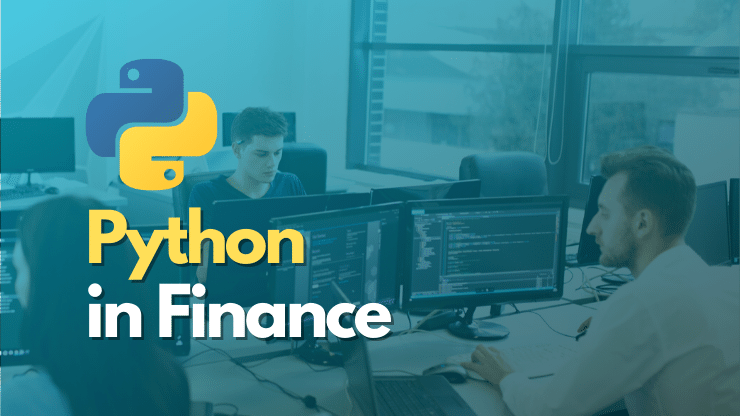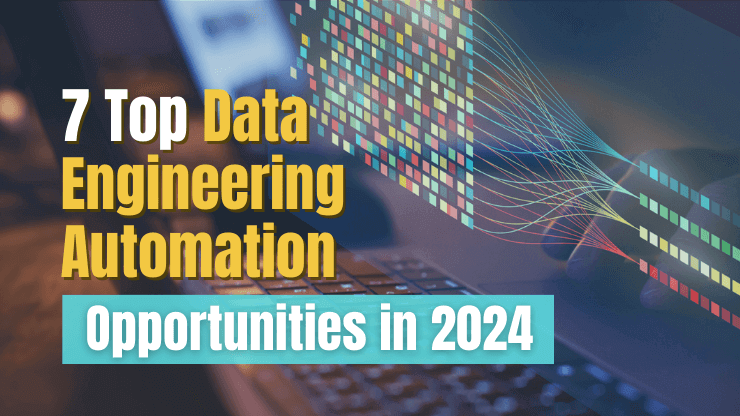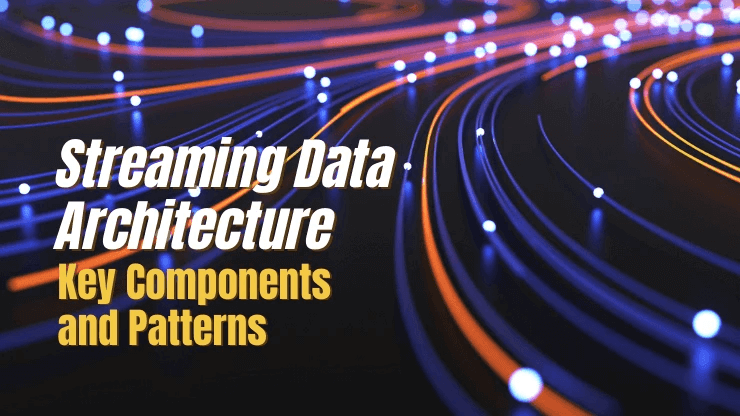The finance sector is evolving daily, and now financial institutions are not only concerned with finance, but also with technology as an asset. Technology provides a competitive advantage as well as increased speed in the rate and frequency of financial transactions by financial institutions, among other things. Python is the most popular programming language in finance. Because it is an object-oriented and open-source language, it is used by many large corporations, including Google, for a variety of projects. Python can be used to import financial data such as stock quotes using the Pandas framework. This article will teach you how to use Python for finance.
Python is an object-oriented programming language that is open source. The majority of the supporting tools and libraries are open source and freely available. It is also a very simple language because it can read English, so even a beginner can begin with it. This is why python is used in finance because non-programmers can easily learn it. It is available for all major platforms and operating systems, including Windows, Mac, and Linux. This language is also well-known for its simple syntax.
What is Python used for in finance?
Python comes in handy in a broad range of applications. Here are the most popular uses of the language in the financial services industry.
Analytics tools. Python is commonly used in quantitative finance to process and analyze massive datasets, such as financial data. Pandas is a library that simplifies the process of data visualization and allows for complex statistical analyses. Python-based solutions are equipped with powerful machine learning algorithms that enable predictive analytics, which is extremely important to all financial services providers, thanks to libraries like Scikit or PyBrain. Examples of such products: Iwoca, Holvi
Banking software Python is also used by financial institutions to provide payment systems and online banking applications. Venmo is a great example of a mobile banking app that has evolved into a full-fledged social networking site. Python is useful for designing ATM software that improves payment processing because of its simplicity and versatility. Examples of such products: Affirm, Robinhood, Stripe, Zopa
Cryptocurrency Every business that sells cryptocurrencies requires tools to analyze cryptocurrency market data and make predictions. Anaconda, a Python data science platform, aids developers in obtaining cryptocurrency prices, analyzing them, and visualizing financial data. As a result, Python is used by the vast majority of web applications that deal with bitcoin analysis. Examples of such products: Dash, Enigma, ZeroNet, koine
Building a stock trading strategy with Python The stock market generates enormous amounts of financial data, which necessitates extensive research. That's when Python comes in handy. It can be used by developers to build solutions that discover the best stock trading methods and provide practical, predictive analytical insights into the state of specific markets. Algorithmic trading in fintech products is an example of a use case. Examples of such products: Quantconnect, Zipline, Backtrader, eBay
Data processing and visualization
The practice of converting information into a visual context, such as a map or graph, to make data easier to understand and extract insights from is known as data processing and visualization. Data visualization's main goal is to make it easier to spot patterns, trends, and outliers in large datasets. Python libraries include;

Pandas
Pandas is a Python library that provides high-performance, easy-to-use data structures, and data analysis tools for labeled data. Python Data Analysis Library is referred to as Pandas. Pandas take data from a CSV or TSV file or a SQL database and turn it into a data frame, a Python object with rows and columns.

Numpy
Numpy is an array processing package that can be used for a variety of tasks. It offers high-performance multidimensional array objects as well as array-related tools. The homogeneous multidimensional array is NumPy's core object. It's a table containing the same datatype elements or numbers, indexed by a tuple of positive integers.
What can you do with NumPy?
- Basic array operations: add, multiply, slice, flatten, reshape, index arrays
- Advanced array operations: stack arrays split into sections, broadcast arrays
- Work with DateTime or Linear Algebra
- Basic Slicing and Advanced Indexing in NumPy Python

Matplotlib
Matplotlib is a Python plotting library that offers an object-oriented API for embedding plots in applications. It is similar to MATLAB embedded in the Python programming language. Matplotlib can display a wide range of visualizations, including histograms, bar plots, scatter plots, area plots, and pie plots. With a bit of effort and tint of visualization capabilities, with Matplotlib, you can create just any visualizations:
- Line plots
- Scatter plots
- Area plots
- Bar charts and Histograms
- Pie charts
- Stem plots
- Contour plots
- Quiver plots
- Spectrograms

Seaborn
Seaborn is a Matplotlib-based data-visualization library that provides a high-level interface for creating visually appealing and instructive statistical visuals. Putting it simply, seaborn is an extension of Matplotlib with advanced features.

Bokeh
Bokeh is a Python package for interactive data visualization. Bokeh allows you to quickly create complicated statistical charts using simple commands. HTML, notebook, or server output are all supported.
Predicting outcomes
A Python application could be used to compare the pricing of the same commodity/instrument/stock in multiple markets. This frees you up to focus on other essential things rather than staring at a screen all day comparing costs. Your Python application can return the highest and lowest prices across markets in different parts of the world, allowing you to trade with ease and maximize your profits.
Algorithm trading
Trading stocks is a demanding job that involves the daily analysis of thousands of figures and other data points to extract any useful data. When it comes to optimizing your trades, numbers and other numerical data elements are crucial. Python can assist you in developing highly customized strategies as well as tools that enable you to implement them efficiently. Python not only assists you in precisely plotting data but also allows you to make the most of each deal.
Let's look at an Arbitrage deal as an example. Arbitrage is the practice of benefitting from the price differential between two marketplaces for the same stock, commodity, or instrument. It entails purchasing at a lower price in one market and selling at a somewhat higher price in the other. The difference in price between the two markets is the profit in an arbitrage trade.
Financial software development
Python can be utilized to create incredibly scalable and secure banking software solutions. Python is utilized in the banking industry to power both online and offline applications. Python has been used to create and maintain a large number of payment gateways. In the offline world, ATM software is also written in Python since it allows for near-instantaneous seamless integration of algorithms, resulting in speedier transaction processing. Examples: JPMorgan's Athena trading platform, is built on Python. JP Morgan's proprietary trading software, Athena, is written in Python. ii. Quartz is a joint trading, risk management, and position management platform developed by Bank of America and Merrill Lynch. It was built from scratch using Python.
Advantages of Python over Excel
Python has a library for data analysis called pandas. Pandas is a software library extension of Python. It works with data stored in Python to manipulate and analyze data. As opposed to Excel, Python is completely free to download and use.
Advantages of Pandas over Excel are:

Can handle files and APIs
Pandas is not only substantially faster than Excel, but it also has a much smarter machine learning backbone. Pandas is better at automatically reading and categorizing data since this machine learning software is in place. It is far easier to clean up data than Excel, and it can automate a lot of the processes, such as repairing data holes and cleaning duplicates. It would be incredibly tough to search through data seeking for missing information when dealing with millions of data points. Pandas can assist with this and complete the task in a matter of seconds.
Pandas is also very effective for visualizing data to see trends and patterns. Although Excel's interface for making graphs and charts is easy to use, pandas is much more malleable and can do much more. Graphs are much more customizable and you can create pretty much any concept you want with pandas.
Can handle large data
Pandas is a Python extension that extends the functionality of Python. As a result, it's really quick and efficient. In Excel, once you exceed 10,000 rows, it starts to slow down — considerably. Pandas, on the other hand, has no real limit and handles millions of data points seamlessly. Excel limits a single spreadsheet to exactly 1,048,576 rows in terms of pure space. Your computations would take an eternity to complete at that point. Excel would most likely just crash. Pandas, on the other hand, has no limit on how many data points you may have in a Data Frame (their version of a data set). It is solely limited by the CPU power and memory of the computer on which it runs.
Data processing tools
NumPy
NumPy is a general-purpose array-processing library that is one of Python's most fundamental packages. It offers high-performance multidimensional array objects as well as array-related tools. NumPy is a useful container for multi-dimensional data in general.
The homogeneous multidimensional array is NumPy's core object. It's a table containing the same datatype elements or numbers, indexed by a tuple of positive integers. Dimensions are referred to as axes in NumPy, and the number of axes is referred to as rank. The array class in NumPy is called array aka array.
What can you do with NumPy?
- Basic array operations: add, multiply, slice, flatten, reshape, index arrays.
- Advanced array operations: stack arrays split into sections, broadcast arrays.
- Work with DateTime or Linear Algebra.
- Basic Slicing and Advanced Indexing in NumPy Python.
Scipy
The SciPy library is one of the foundational packages that comprise the SciPy stack. There is now a distinction between SciPy Stack and SciPy, the library. SciPy is based on the NumPy array object and is part of the stack, which also includes tools like Matplotlib, Pandas, and SymPy.
The SciPy library includes modules for efficient mathematical routines such as linear algebra, interpolation, optimization, integration, and statistics. The SciPy library's main functionality is based on NumPy and its arrays. NumPy is extensively used in SciPy.
When to use it? SciPy uses arrays as its basic data structure. It has various modules to perform common scientific programming tasks as linear algebra, integration, calculus, ordinary differential equations, and signal processing.
Machine learning tools
Machine learning and artificial intelligence-based projects are obviously what the future holds. From development to deployment and maintenance, Python helps developers be productive and confident about the software they’re building. Benefits that make Python the best fit for machine learning and AI-based projects include simplicity and consistency, access to great libraries and frameworks for AI and machine learning (ML), flexibility, platform independence, and a wide community. These add to the overall popularity of the language.
Some machine learning tools include:
Scikit Learn
Scikit Learn is a robust machine learning library for Python that was introduced to the world as a Google Summer of Code project. It features ML algorithms like SVMs, random forests, k-means clustering, spectral clustering, mean shift, cross-validation, and more... Scikit Learn also supports NumPy, SciPy, and related scientific operations, as it is part of the SciPy Stack.
When should you use it? Scikit-learn provides a variety of supervised and unsupervised learning algorithms through a consistent Python interface. Scikit learn is your go-to for supervised learning models like Naive Bayes and grouping unlabeled data like KMeans.
What can you do with Scikit Learn?
- Classification - Spam detection, image recognition
- Clustering - Drug response, Stock price
- Regression - Customer segmentation, Grouping experiment outcomes
- Dimensionality reduction - Visualization, Increased efficiency
- Model selection - Improved accuracy via parameter tuning
- Pre-processing - Preparing input data as a text for processing with machine learning algorithms
Scikit Learn focuses on modeling data; not manipulating data. We have NumPy and Pandas for summarizing and manipulation.
TensorFlow
TensorFlow is an AI library that allows developers to use data flow graphs to create large-scale neural networks with many layers. TensorFlow also makes it easier to build Deep Learning models, advance the state-of-the-art in ML/AI, and easily deploy ML-powered applications. TensorFlow's website is one of the most developed of all libraries. TensorFlow is used by companies such as Google, Coca-Cola, Airbnb, Twitter, Intel, and DeepMind.
When to use it? TensorFlow is very good at classification, perception, understanding, discovering, predicting, and creating data.
What can you do with TensorFlow?
- Voice/Sound Recognition — IoT, Automotive, Security, UX/UI, Telecom
- Sentiment Analysis — Mostly for CRM or CX
- Text-Based Apps — Threat Detection, Google Translate, Gmail smart reply
- Face Recognition — Facebook’s Deep Face, Photo tagging, Smart Unlock
- Time Series — Recommendation from Amazon, Google, and Netflix
- Video Detection — Motion Detection, Real-Time Threat Detection in Gaming, Security, Airports
Keras
Keras is TensorFlow's high-level API for creating and training Deep Neural Network code. It is a Python neural network library that is open source. Keras simplifies statistical modeling, image and text processing, and deep learning coding.
What can you do with Keras?
- Determine percentage accuracy
- Compute loss function
- Create custom function layers
- Built-in data and image processing
What is the difference between Keras and TensorFlow after all?
Keras is a neural network Python library while TensorFlow is an open-source library for various machine learning tasks. TensorFlow provides both high-level and low-level APIs while Keras provides only high-level APIs. Keras is _built for Python _which makes it way more user-friendly, modular, and composable than TensorFlow.
Conclusion
Python has become a leading language and is widely used in all sectors, including finance, which is one of the major streams of finance, particularly with the advent of technology in finance such as cryptocurrency. Python's clear programming syntax and amazing ecosystem of tools make it one of the best technologies to handle the development process of any financial service.







![10 Dos and Don'ts - Financial App Development [2025 Guide]](/uploads/blog/financial-app-development/financial-app-development.png)